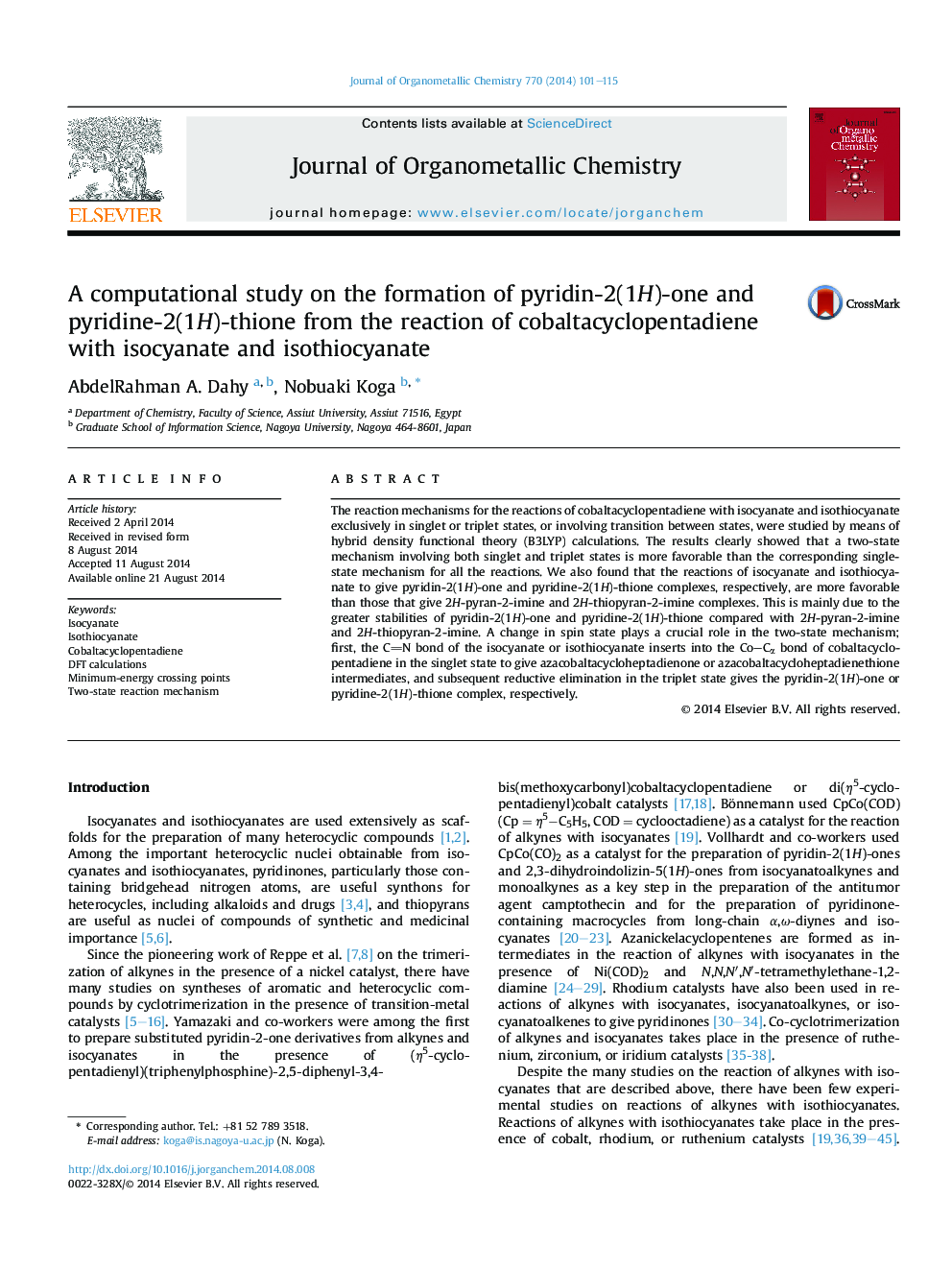| Article ID | Journal | Published Year | Pages | File Type |
|---|---|---|---|---|
| 1323653 | Journal of Organometallic Chemistry | 2014 | 15 Pages |
•The reaction mechanisms were elucidated by means of DFT calculations.•The reactions to give pyridinone and pyridinethione complexes are favorable.•A two-state mechanism involving both singlet and triplet states is adopted.•Minimum-energy crossing points play a crucial role in the mechanism.
The reaction mechanisms for the reactions of cobaltacyclopentadiene with isocyanate and isothiocyanate exclusively in singlet or triplet states, or involving transition between states, were studied by means of hybrid density functional theory (B3LYP) calculations. The results clearly showed that a two-state mechanism involving both singlet and triplet states is more favorable than the corresponding single-state mechanism for all the reactions. We also found that the reactions of isocyanate and isothiocyanate to give pyridin-2(1H)-one and pyridine-2(1H)-thione complexes, respectively, are more favorable than those that give 2H-pyran-2-imine and 2H-thiopyran-2-imine complexes. This is mainly due to the greater stabilities of pyridin-2(1H)-one and pyridine-2(1H)-thione compared with 2H-pyran-2-imine and 2H-thiopyran-2-imine. A change in spin state plays a crucial role in the two-state mechanism; first, the CN bond of the isocyanate or isothiocyanate inserts into the Co–Cα bond of cobaltacyclopentadiene in the singlet state to give azacobaltacycloheptadienone or azacobaltacycloheptadienethione intermediates, and subsequent reductive elimination in the triplet state gives the pyridin-2(1H)-one or pyridine-2(1H)-thione complex, respectively.
Graphical abstractThe mechanisms for the reactions of cobaltacyclopentadiene with isocyanate and isothiocyanate were elucidated by DFT calculations. A two-state mechanism involving both singlet and triplet states is adopted, and the reaction pathways to give pyridinone and pyridinethione complexes are favorable. Minimum-energy crossing points play a crucial role in the mechanism.Figure optionsDownload full-size imageDownload as PowerPoint slide
